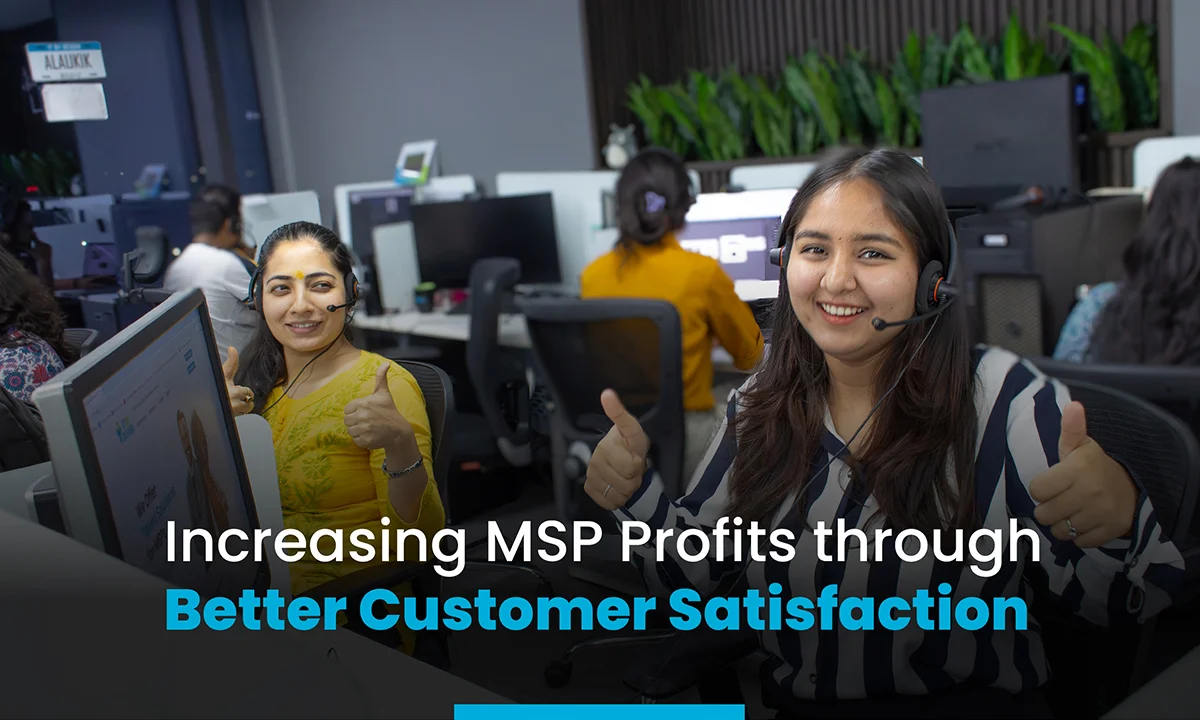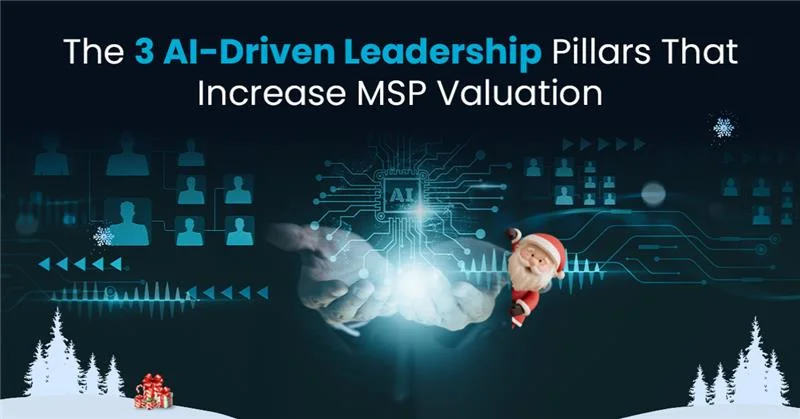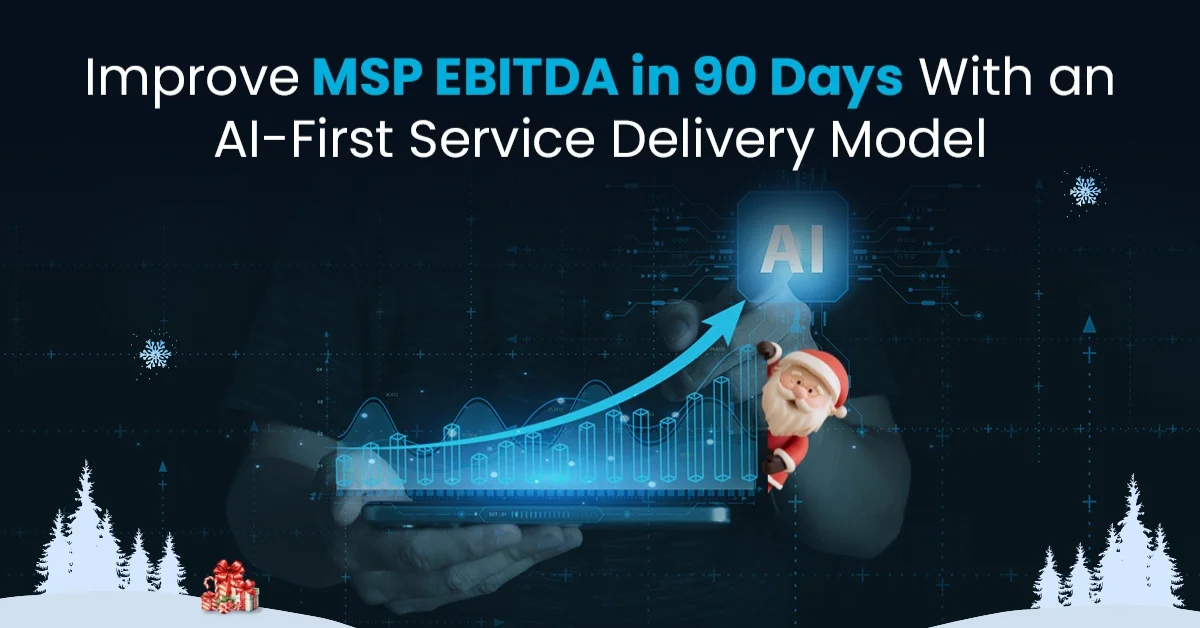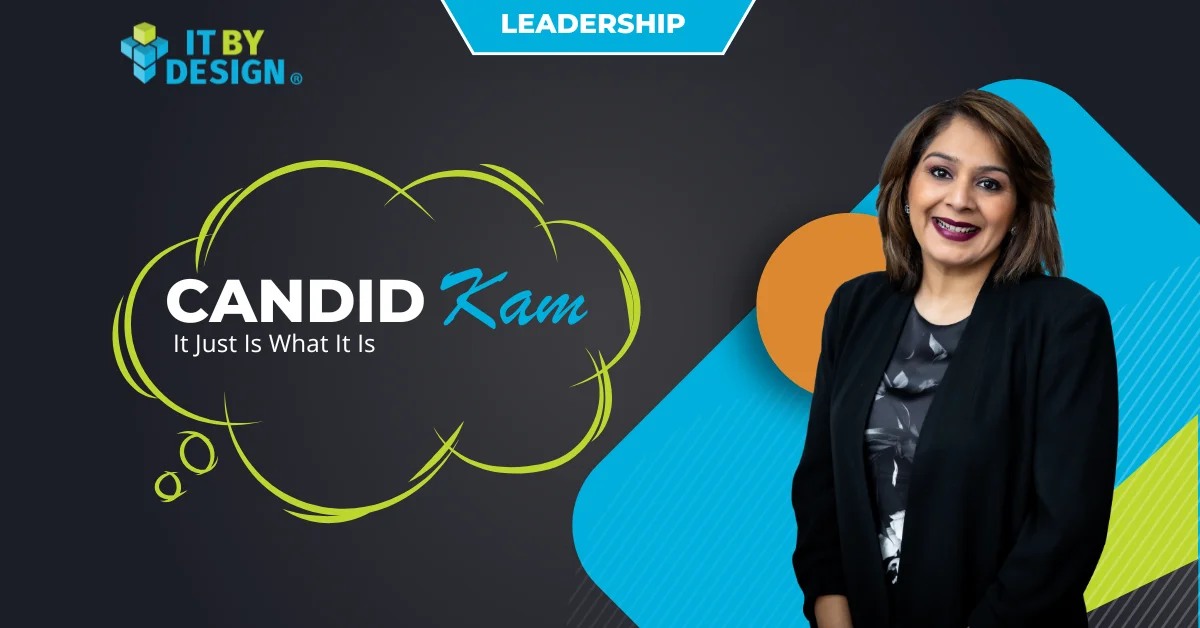Your MSP must stand out from the competition. Sure, technical prowess and a robust service portfolio are going to help with that, but it’s the customer experience you offer that truly sets you apart. By prioritizing high levels of customer satisfaction, you not just foster happy customers, you unlock greater potential profits.
In this blog, we’ll explore how improving customer satisfaction can directly boost your MSP’s profits, and actionable strategies to enhance your customer relationships and service quality.
The connection between customer satisfaction and profits
When customers are satisfied, they are more likely to stay loyal, refer others and contribute to a positive reputation, all of which boosts profitability. Here are a few factors that prove the strong connection between customer satisfaction and your profits:
- Customer retention: Satisfied customers are more likely to continue using your services. High retention rates reduce the costs associated with acquiring new customers and provide a steady revenue stream.
- Referrals and reputation: Happy customers often refer others to your services, leading to organic growth. Positive word-of-mouth and strong testimonials enhance your reputation and attract new customers.
- Competitive advantage: Providing outstanding customer service makes you stand out in a crowded market. Customers are less likely to go to competitors, even if they provide comparable or less expensive services, when they feel appreciated and supported.
- Revenue growth: Satisfied customers are more inclined to invest in additional services and upgrades. This increases your revenue per customer and maximizes the lifetime value of each customer relationship.
- Feedback and improvement: Engaged and satisfied customers provide valuable feedback, helping you identify areas for improvement and innovation. This ensures your services remain top-notch and relevant.
Factors influencing customer satisfaction
Customer satisfaction can be influenced by several critical factors that determine the quality and reliability of the services you provide, such as:
- Service quality: The primary driver of customer satisfaction is the quality of the services you offer. This includes uptime, response times and the effectiveness of issue resolution. High-quality, reliable service ensures your customers can trust you to keep their operations running smoothly.
- Communication and responsiveness: Clear, timely and transparent communication is crucial. Your customers need to feel that their concerns are heard and addressed promptly. Your regular updates and quick responses to inquiries or issues significantly enhance satisfaction.
- Proactive support: If you anticipate potential issues and address them before they impact your customers, you demonstrate a high level of competence and care. Proactive monitoring also indicates your genuine investment in customer success.
- Personalized service: Tailoring services to meet the unique needs of each of your customers fosters a stronger relationship. Understanding and adapting to specific business requirements makes your customers feel valued and supported by you.
- Technical expertise: The skill level and knowledge of your employees play a significant role in customer satisfaction. Customers expect you to provide expert guidance and solutions for their IT challenges.
- Cost-effectiveness: While not always the most important factor, the cost of services relative to the value provided can impact satisfaction. Your customers want to feel that they are receiving good value for their investment.
- Customer feedback and continuous improvement: Actively seeking customer feedback and using it to improve services shows that you are committed to meeting your customer needs and evolving based on the input. This approach builds trust and loyalty.
Common challenges affecting customer retention for your MSP
Keeping your current customers happy is paramount, but navigating the obstacles in the way can be complex. Here are some customer retention challenges you can face that impact your profitability:
- Workforce-to-workload balance: Ensuring personalized support for each customer while managing workforce capacity within budget constraints is a common challenge for your MSP. Balancing staffing levels to meet customer demands without overstretching resources is essential for maintaining high satisfaction levels.
- Supply chain shortages: Accessing essential technology is crucial for retaining your customers, but you might face obstacles due to ongoing supply chain disruptions. The impact of these shortages on the availability of necessary hardware and software can hinder your ability to deliver optimal solutions to your customers.
- Adoption of new technologies: You must stay ahead of evolving technology trends to meet customer expectations and retain loyalty. While adapting to new technologies like remote work support and enhanced security measures is essential, integrating these solutions seamlessly into existing tech stacks can be challenging. Simplifying your complex tech environments to align with modern customer needs is vital for long-term retention.
Strategies to boost customer retention
Increasing customer retention rates by 5% can increase profit by more than 25%, according to Bain and Company.
Keeping that in mind, below are few main strategies to help you boost your customer retention:
- Provide visible benefit: Initially, your customers are aware of the benefit since software-as-a-service (SaaS) contracts spare them large upfront capital expenditures. Even the monthly subscription won’t be as valuable in the long run as it was initially. Most customers seek a monthly price reduction while renewing their membership, or they pay the same amount for extra services.
Value is visibly consistent when monthly reports highlighting customers’ ROI returns are sent. Reviewing such reports with key stakeholders is another way to make sure they get the message.
- Increasing customer service-related KPIs: Measurable values such as key performance indicators (KPIs) can assist your MSP in determining if you are accomplishing your objectives. It functions as a roadmap to help envision the future and the best course of action for you. You can discern if your customers are satisfied by closely examining KPIs. For example, metrics like NPS (net promoter score) and lifetime value can be used to monitor satisfaction.
- Establishing a communication calendar: Keeping in frequent contact with customers is facilitated by a communication calendar. You can schedule activities such as phone calls, emails, personalized offers and even handwritten notes in the in-built calendar that would be sent to customers.
- Managing expectations: Your customers have higher expectations when you make promises, and they will get irate and dissatisfied if the expectations are not met. For example, if you promised to supply it in 20 minutes but only delivered it five minutes late, your customers would complain as though the service was an hour late. Dissatisfied customers are likely to tell more people about their experience, which might damage your business’ reputation.
- Establishing reliable connections: Establishing business connections and trust needs time, but delivering high-quality services on a regular basis is a smart place to start. Customers who have lost confidence quickly prefer to turn to rivals because trust is brittle. It is beneficial to offer value to products and services through consumer behavior data.
How Team GPS helps you ensure high customer engagement and retention
Team GPS can help you engage your customers, with the right data, to ensure your happy customers drive referrals and contribute to a positive brand reputation.
Here’s how Team GPS helps you ensure high customer engagement and retention:
- Effortless Communication: Team GPS can streamline communication for faster responses.
- Quick Issue Resolution: Collaborate efficiently for prompt problem-solving.
- Tailored Support: Personalize service to meet each of your customer’s needs.
- Insightful Data: Gain valuable insights to anticipate your customer needs.
- Enhanced Accountability: Track performance for consistent service.
- Structured Feedback: Collect feedback regularly using custom surveys.
Talk to us today to find out more about how Team GPS can help you boost profitability by mastering how to track and manage customer satisfaction.








